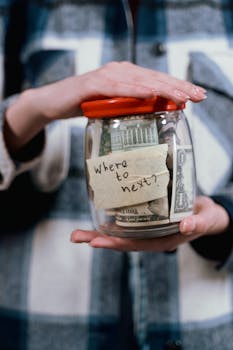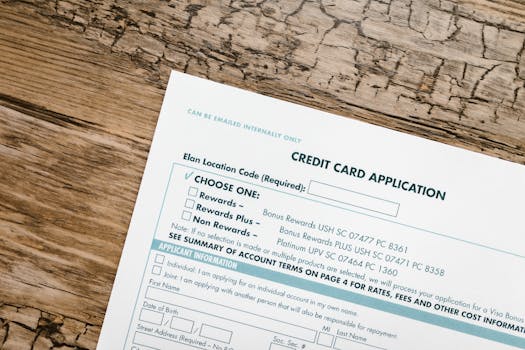Personal finance
What to Do When You’re Living Paycheck to Paycheck
Discover smart, actionable habits to break free from living paycheck to paycheck. Learn expense tracking, cost-cutting, and building a safety buffer for lasting financial peace of mind.
Advertisement
Every month, watching your balance drop before the next payday can feel like you’re walking a financial tightrope. For many, living paycheck to paycheck brings quiet stress as each dollar is spent and tracked with precision. There are concrete steps for transforming this cycle into stability.
Money worries shape decisions, influence daily habits, and quietly affect your mood. Understanding why so many people depend on each paycheck to cover basics reveals just how universal this experience is. Still, practical strategies can lead to meaningful change, one decision at a time.
This guide offers clear solutions for navigating and escaping the paycheck to paycheck pattern. You’ll find real examples, lists for direction, and a table for quick comparisons—so you can confidently take control of your finances today.
Immediate Steps for Making Every Paycheck Cover the Essentials
Start by matching your spending to actual needs, not assumptions. You’ll find clarity by tracking, categorizing, and rethinking each purchase. This first move prevents surprises and gives you the data to make confident decisions.
Instead of hoping each paycheck to paycheck cycle works out, break down your expenses into essential and non-essential categories. Write these out on paper or use your banking app’s transaction list for a real-time snapshot.
Build a Reliable Spending Log
Write down every outflow—morning coffee, utility bill, or streaming service. Seeing numbers on a page hits differently than hoping for enough money to last until next payday.
If numbers jump around unexpectedly, look for patterns. Maybe eating out every Friday adds up quickly or small daily expenses chip away at your buffer. Label the most consistent items as unavoidable essentials first.
Next to each item, mark its due date or the day it comes out. If rent, for example, is withdrawn just after payday, note how this shapes the rest of your month. Reserve cash for these set-date expenses above all else.
Prioritize Absolute Needs Over Wants
Circle housing, utilities, groceries, transportation, and debt payments. Everything else falls behind these categories. If something must go, it starts with the least painful—maybe a subscription, not groceries.
Thinking “I can always rejoin next month” or “I’ll take a short break” makes these cuts less emotional. Refer to your log weekly to revisit your priorities and rebalance spending as needed.
When setbacks arise—like an unexpected bill—review the list instead of panicking. Reorder categories just enough to get through, then reset for next payday. This transparency is the first habit in escaping the paycheck to paycheck rut.
| Expense Category | Frequency | Essential? | Takeaway |
|---|---|---|---|
| Rent/Mortgage | Monthly | Yes | Prioritize payment on payday; avoid late fees and housing instability by setting automatic transfers. |
| Groceries | Weekly | Yes | List shop after each paycheck to stay on budget and prevent unnecessary extra trips. |
| Streaming Subscriptions | Monthly | No | Pause or cancel when cash is tight; revisit subscriptions quarterly to cut costs. |
| Dining Out | Weekly/Biweekly | No | Limit to celebrations; substitute with low-cost meals at home to stretch each paycheck. |
| Transportation (Gas/Transit) | As Needed | Yes | Refuel in smaller increments and monitor spending; consider public transit when affordable. |
Rerouting Your Payment Flow to Avoid Surprises and Shortfalls
Organize your incoming and outgoing payments so you’re not ambushed by forgotten bills or hidden fees. Automating and timing payments ensures that essentials are paid first and you’re not caught off guard during a paycheck to paycheck cycle.
Moving away from manual reminders and scattered due dates reduces stress, builds consistency, and leaves less room for costly errors. Building strong routines helps you feel proactive instead of scrambling when your account gets low.
Align Payments With Your Payday Schedule
Contact your landlord or service providers and request payment dates that coincide with your primary payday. It’s common to say, “Can we move my due date to the 1st or 15th?”
When your bills are clustered around income deposits, you’ll see what’s available for non-essentials almost immediately. Banks can assist with automatic bill-pay setups; ask during a visit or through online support.
- Set bill due dates after direct deposit. This limits late fees and guarantees funds are available at payment time. Contact providers for one-time due date changes after your paycheck.
- Combine autopay with calendar reminders. Enable autopay for rent and fixed costs, while keeping reminders for variable bills. This creates backup checks on your key payments.
- Use account alerts for low balances. Most banks let you trigger custom alerts for your checking account before bills hit. Adjust these alerts if big payments are pending.
- Split direct deposits into savings and checking. Ask your employer to divide each paycheck to send a set amount straight to savings, creating built-in protection against shortfall.
- Review statement dates for credit cards. Matching card payment due dates before payday prevents interest from accruing and keeps you out of the fee cycle.
If a provider or landlord resists date changes, use temporary transfers to cover that bill on time; then continue requesting alignment periodically. Over a few months, you’ll reduce mismatches across the board.
Spotlight: Avoiding Overdraft Fees Mid-Month
Keep a $50 buffer in your account to cushion against surprise charges. Highlight recurring small charges in your log—gym, insurance, or app bills—so you’re never caught off guard by an overdraft.
Maintain an emergency contact list for quick bill troubleshooting. For instance, “If my card is charged twice accidentally, I call immediately rather than waiting until my balance is too low.” Ask your bank about one-time overdraft forgiveness; some allow it if you contact them fast.
- Flag irregular bills in your calendar. Mark dates for insurance, quarterly utilities, and memberships. Prevent spikes by noting renewals well before they process.
- Freeze small subscriptions after reviewing spending. If you’re tight, skip one month and restart when cash flow improves instead of juggling late fees.
- Text yourself reminders for variable bills. Example: “Electric bill due next week, transfer $75.” This acts as a backup cue if apps or paper statements fail.
- Batch payments if possible. Pay several small bills with a single transfer after payday, reducing mid-month surprises and letting you track what remains easily.
- Check text/email for payment confirmation. Act promptly if a bill is marked unpaid; chase errors before they grow. Request written confirmation for major payments.
Gradually batch more payments together as your log improves. Over time, this builds a transparent routine that makes living paycheck to paycheck less stressful.
Tactics for Trimming Recurring and Discretionary Costs Right Now
Find savings you can apply within a week—not a month from now. Slashing non-essentials directly frees up each paycheck, allowing more room to maneuver or save. This is the fuel for escaping the paycheck to paycheck grind.
Addressing these areas doesn’t require sacrifice, just minor tweaks with immediate benefits: renegotiating recurring bills, planning grocery trips, and shaking up entertainment habits so each paycheck stretches further.
Edit Your Subscriptions in One Sitting
Gather your statements and highlight every subscription—music, apps, meal kits, boxes, or magazines. Mark “renew,” “pause,” or “cancel.” Most services allow you to self-cancel online with one or two clicks.
The process helps you realize which services you actually use each week. For example, “I paused my meal delivery for two weeks and bought bulk pantry items instead, saving $30.” This decision requires three minutes on a laptop or phone.
Review paid trials and auto-renewals, too. Make a list of which renew soon and set a calendar reminder two days before so you don’t forget the cancellation window.
Change Up Groceries and Meals
Rethink your meal plan. Instead of buying food for seven unique dinners, pick three or four affordable recipes and double up. Use your store’s weekly sales flyer or app, then meal prep on Sunday night.
Substitute premium brands for store brands as an experiment. Examples: swap deli cheese for block cheese, or skip the ready-to-eat salad mix for heads of lettuce. Small moves can drop your weekly grocery bill by 15 percent.
If you’re short, end the week with leftovers or “clean the fridge” nights. This routine tests your creativity and slashes food waste, freeing up cash by next payday.
Building a Personal Emergency Buffer—One Small Win at a Time
Even a $20 buffer between paychecks eases pressure. Building a basic emergency stash happens by stringing together micro-savings from cut costs. Every added dollar makes the paycheck to paycheck life less precarious.
Imagine using cash-back offers or loose change jars to gather $5 to $10 each week. Transfer this amount immediately after each payday for best results. Over time, this becomes a habit as normal as paying rent.
Quick-Start Savings Micro-Habits
Drop any spare change each night into a dedicated jar or digital envelope. Do a “pocket sweep” and transfer the bills to savings during your weekly grocery run. Use mobile banking for instant digital envelope transfers—no trips to the bank needed.
When payroll hits, round down your checking account to the nearest $10 or $20. Move the difference over to a hidden sub-account labeled “Do Not Touch.” You’ll train yourself to budget off slightly less than your true balance.
If you get small cash gifts, bonuses, or rebates, treat them as “out of sight, out of mind” by stashing them away. This jumpstarts your emergency buffer far faster than planned savings alone.
Making Buffer-Building Automatic
Most workplaces allow split direct deposits or automatic payroll deductions to savings accounts. Set this up online or with HR in under 10 minutes, even for just $10 per pay period.
Auto-transfer a fixed amount from checking to savings after payday—say $20 each time. Schedule the move for payday plus one day. Confirmation notifications will remind you of progress and solidify the habit.
If your bank allows, nickname the savings account “Car Trouble” or “Rent Buffer.” Custom labels create emotional distance so you avoid dipping in for non-emergencies. This helps you break the paycheck to paycheck cycle steadily.
Sharpening Spending Awareness to Identify Money Leaks
Increasing awareness of subtle money leaks leaves you with more cash after every paycheck hits. Becoming conscious of spending reveals waste hiding in plain sight—tiny purchases, overlooked fees, or routine upgrades that seem harmless.
Keep a visual reminder on your phone’s lock screen or a sticky note on your wallet: “Do I need this, or is it just a habit?” This regular pause reprograms automatic spending both in-store and online.
Spot Daily Habit Purchases
For one week, track any item under $10—a coffee, app micro-purchase, bottled water, dollar store pick-up. Rig a counter in your notes app and review totals every night. Patterns surprise you.
Script for yourself: “Today, I’ll add up snacks and drinks on my commute.” After noticing, delay the next day’s purchase five minutes to test if it’s truly needed. Repeat for shifts and weekends.
By Friday, categorize expenses into “routine comfort” and “avoidable impulse.” Cut one recurrent item and reroute those funds to your emergency stash for instant progress.
Stop Overpaying on Unnoticed Fees
Read the fine print on your bank account and cards. Look for maintenance fees, out-of-network ATM penalties, or recurring service fees buried in statements. Direct questions to live chat if you’re unsure: “Am I being charged a monthly fee?”
Switch to no-fee banking options or request a courtesy fee reversal if you notice an oversight. Banks approve most requests when made by the next statement cycle. Check for app micro-charges from past months and ask for a retroactive refund if needed.
Set a quarterly calendar alert to review all statements at once. Pair this with a snack and a 15-minute window, treating it like a routine sweep for spare change. The more fees you avoid, the further your paycheck reaches.
Getting Practical Support and Resources for a Turnaround
Expanding your solution set is key when living paycheck to paycheck feels like a personal failure. Community groups, online tools, or direct conversations unlock new ideas and relieve isolation—opening doors to proven guidance.
Accepting occasional setbacks but aiming for consistent progress is easier when you see others win with your same paycheck to paycheck pattern. Relatable support helps identify tips you may overlook alone.
Expand Your Support Toolkit
Join a neighborhood money club, local financial workshop, or social media challenge. Listen for phrases like, “We all skipped restaurants this week—what did you cook at home?” New routines stick when you share wins and setbacks with peers.
Keep a digital or paper checklist of tips you hear from others. Refer back weekly when you hit a tough patch: “Maria from book club stopped paying delivery fees by meal prepping every Sunday.” Adapt one new tip each month to your context.
Pair up for accountability. Text a friend to check in before payday, swap meal plans, or co-review each other’s bank statements for missed opportunities or fee dodges.
Use Tech for Hands-on Budgeting Help
Explore budgeting apps with basic expense-tracking features. Choose ones that prompt you to correct overspending or alert you about large transactions before they happen. Customize goal trackers for specific buffer or bill targets.
Opt for digital calendars or notes apps to track recurring due dates, sale cycles, and grocery spending routines. It’s easier to stay on track when prompts are visible daily. Set reminders for bill payment three days before payday to blunt any missteps.
Share screenshots with your accountability buddy. Make regular adjustments to budget categories as cash flow improves, shrinking the paycheck to paycheck gap bit by bit as you notice results.
Moving Forward: Breaking the Cycle One Paycheck at a Time
The path out of paycheck to paycheck living is paved with repeatable, small choices. Tracking expenses, automating bills, trimming costs, and building a micro-buffer all add up to stability—there is no single moment of arrival.
Every step toward understanding where your money goes puts more control back in your hands, even if your paycheck to paycheck journey started years ago. Connecting with others, using basic tech, and celebrating even $20 in extra savings are victories worth acknowledging.
Going beyond survival means knowing what matters most, organizing your priorities, and refusing to accept stress as the default condition. Treat every dollar saved and every charge avoided as a building block of lasting financial confidence.





